Surprises inside a custom Scottish-made kilt
A customer came into the shop with his custom, Scottish-made kilt. He said that he had lost weight and wanted his kilt taken in.
OK, fine and dandy. That is usually a simple job of moving the straps and buckles. About an hour's worth of work.
But then, I flopped the kilt down on my table and began to notice some things.
First was that there did not appear to be any stabilizer in the back of the kilt. I could pull, even lightly, on the buckles and the back of the kilt would stretch. So much so that all the stress of strapping the kilt on is being transferred to the Fell Stitching. The Fell area stitching is being stressed beyond its capability. There are already signs of stitching failing. Something was seriously wrong with the internal construction of this kilt.
The same was true when you pull on the straps at the edges of both aprons. The expensive Wool fabric had been distorted over time from something wrong inside.
I also noticed that the pleats seemed to be kicking outward when the customer had this kilt on so I felt up, inside the pleats, and to my surprise I could feel no Steeking stitching.
I won't mention the name of the kiltmaker but this kilt came from one of the most respected Scottish makers. One we all know and expect to provide a premium quality kilt. The customer told me that he ordered the kilt in person, was measured by the kiltmaker, and paid a very dear penny to have it made and shipped to him.
Well, after talking to the customer and giving him the option of simply re-sizing the kilt by moving straps and buckles - or - opening the kilt up and finding out what was going on inside, the customer asked me to open it up and repair or replace what ever I found wrong.
Here is what the kilt looked like when I first got it.
The back of the kilt showing the stretching across the back. You can see how the fabric is distorting and all the stress of wearing the kilt is transferred to the pleat stitching. I don't know if you can see the popped stitches in the pleats and at the buckle tabs.
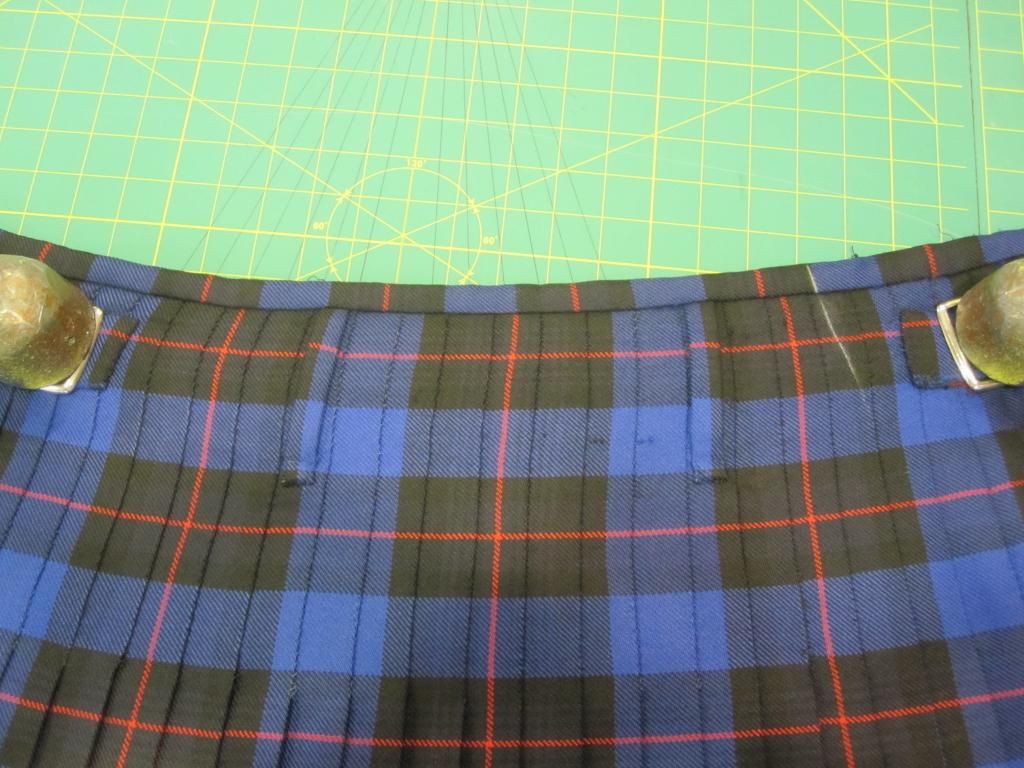
Here are the outer and inner aprons. You can see how the fabric has been distorted over time from stress.
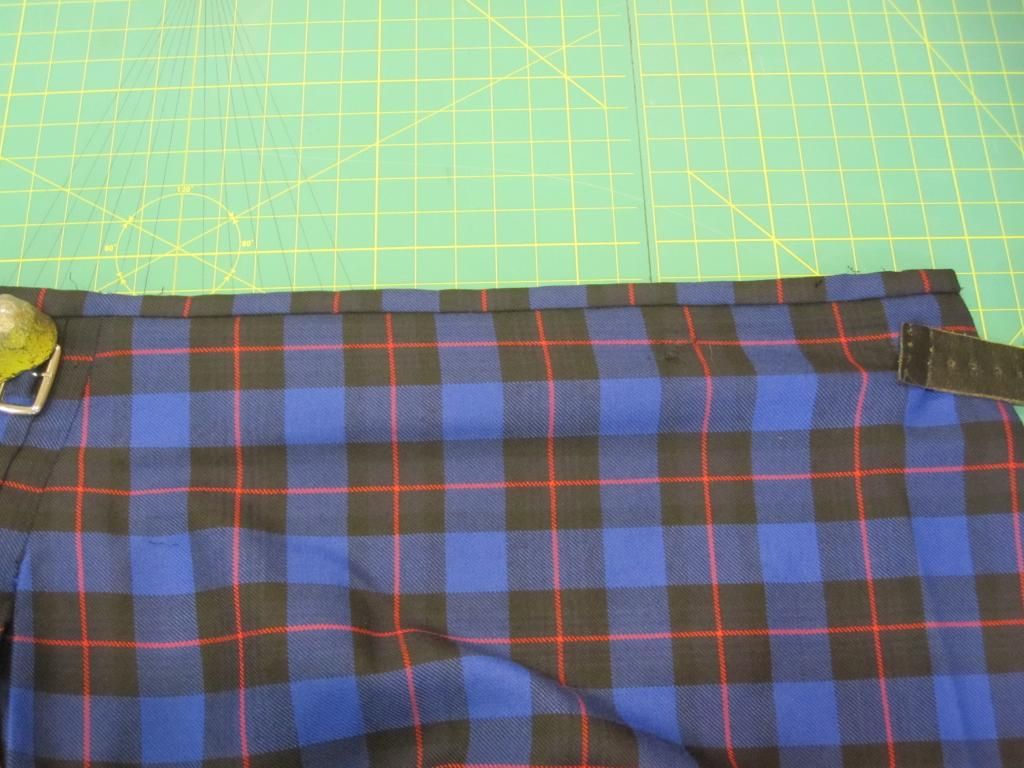
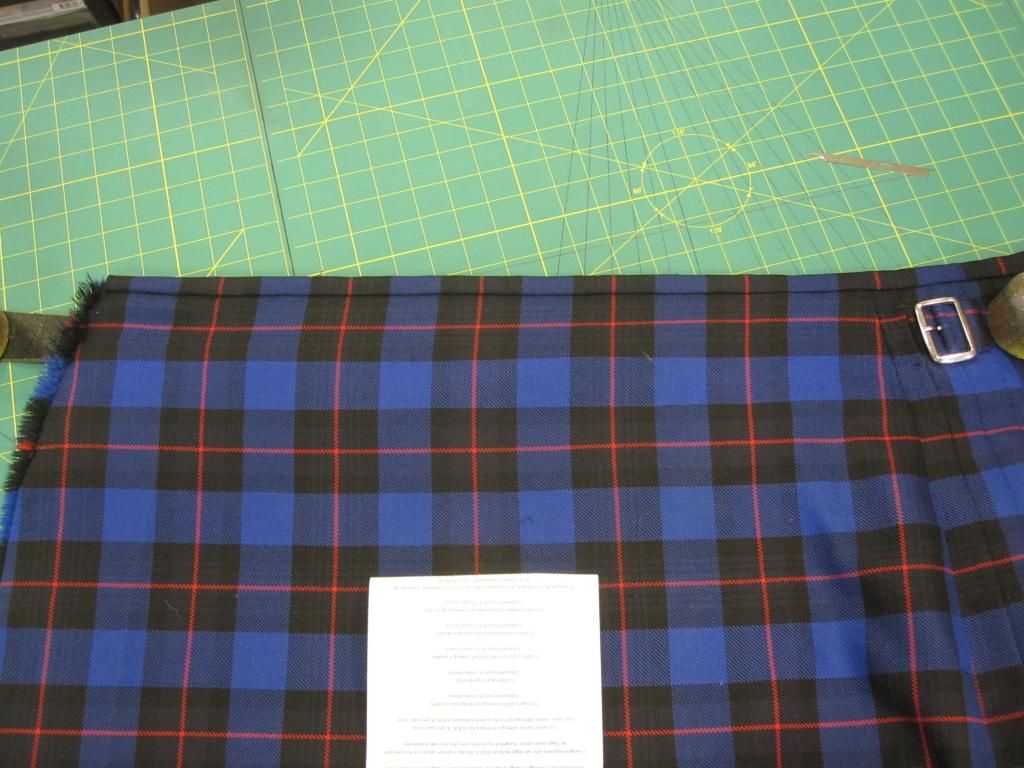
So, just what the heck is going on here. This is a custom made kilt sold by one of the most respected names among Scottish Kiltmakers. The only way to find out is to open this kilt up and take a look.
As I was getting ready to un-stitch the lining I noticed - that where the lining is sewn to the pleats - it is pulling them out of shape.
Look just below where the two sections of lining come together.
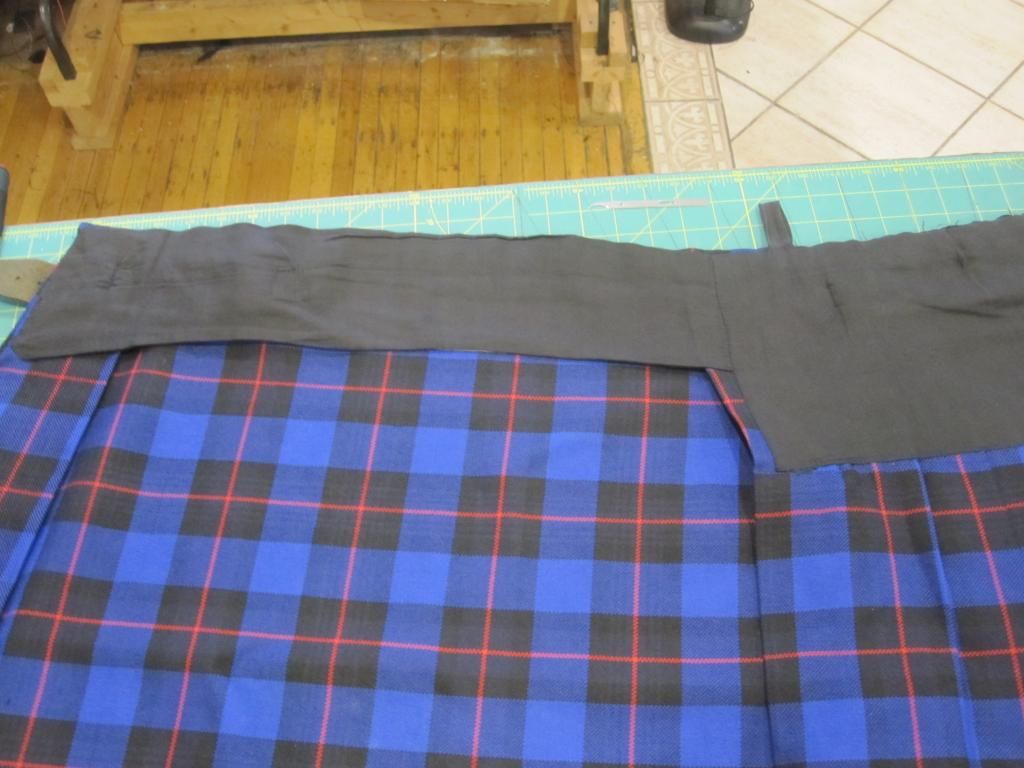
Here is what I found when I cut the lining free. There should be one continuous piece of interfacing here. What I found is three pieces that are not joined at all.
The white tab is stuffed though the strap hole so you can tell where on the kilt this photo is taken.
Also, strangely the black tabs that you can use to hang the kilt up were not sewn to the kilt. They were sewn only to the lining. A light weight piece of lining material would be supporting the entire weight of the kilt.
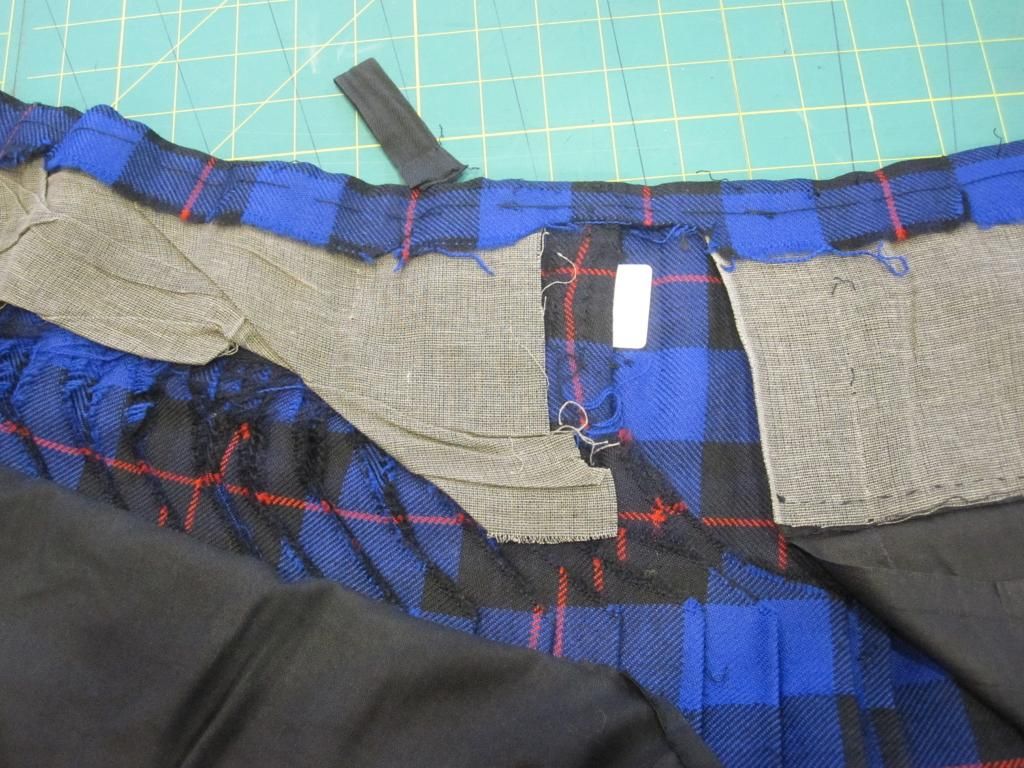
Notice that the center piece of interfacing is not stitched down and has bunched up.
Also notice that the two pieces of interfacing do not meet. There is a large gap between them.
Another thing to notice is that there is no evidence, at all, that the buckles are sewn all the way though the outer fabric and into the interfacing.
And no Steeking, just as I suspected.
I now lifted the interfacing to see if the stabilizer had been cleverly hidden somehow. Just as I suspected there is no stabilizer. In fact even the interfacing is not sewn to the kilt. It adds no strength and really, serves no purpose.
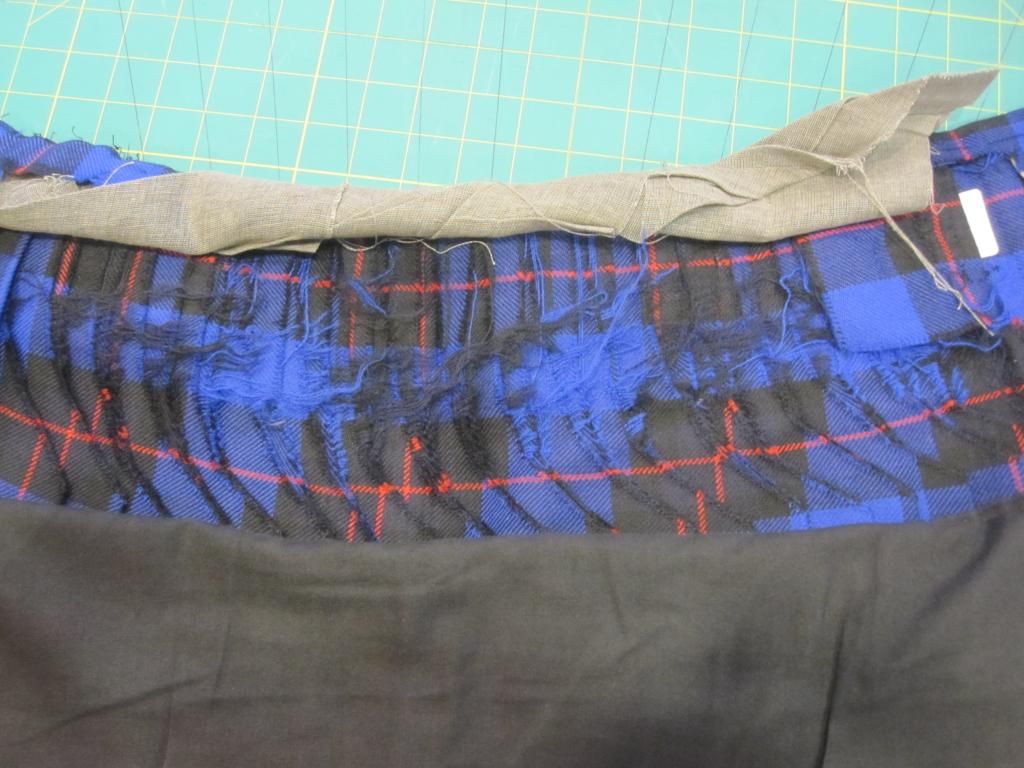
At the under-apron edge the strap is sewn with a total of only five stitches that catch the interfacing. This strap should be firmly attached here.
Also notice that the interfacing itself is not sewn to the kilt at all. It is just sort of floating in there. It is not doing anything. I wonder why the kiltmaker even bothered to put it in if it serves no function.
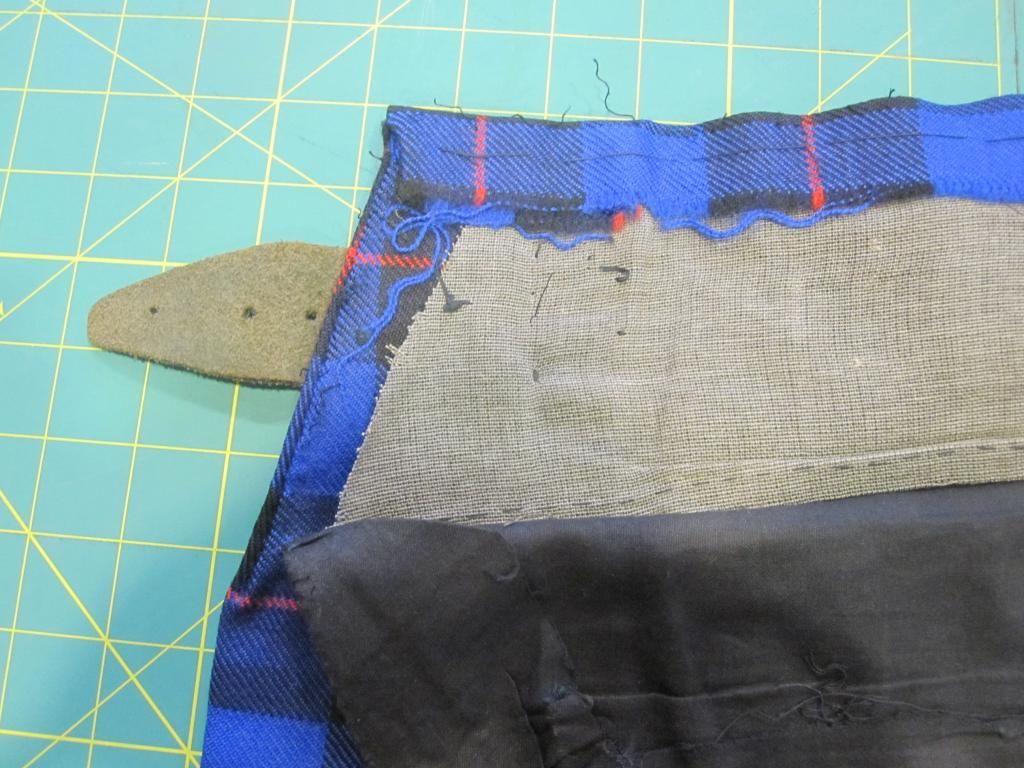
I found a very similar situation on the outer apron.
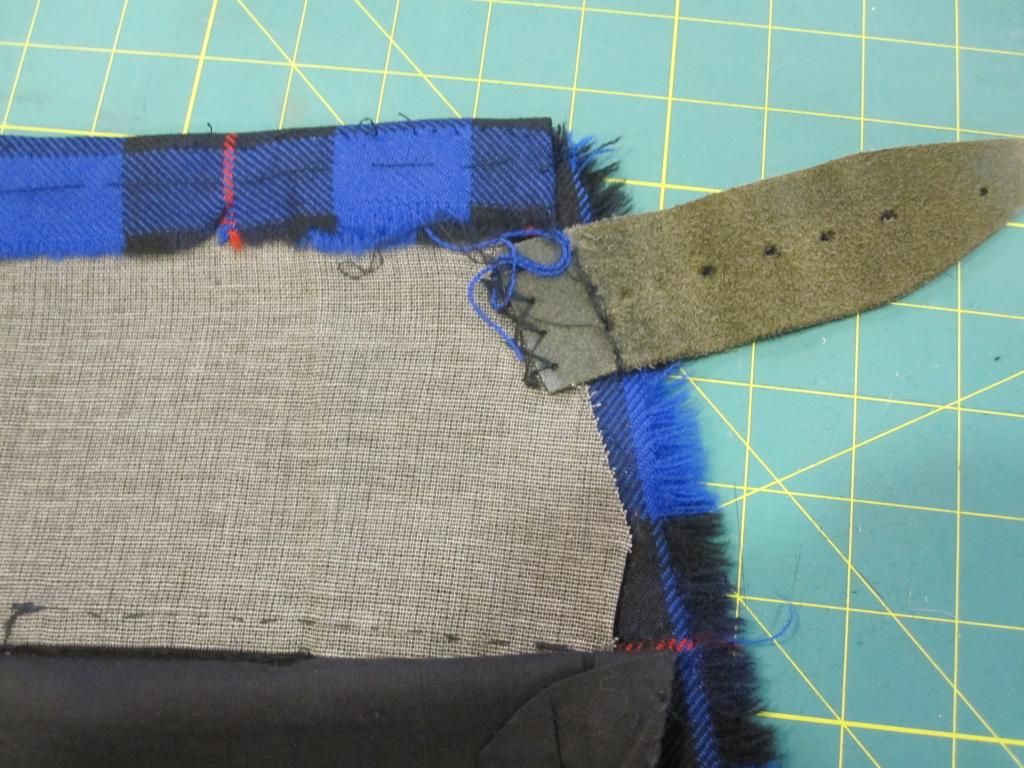
OK, now we start the job of re-building this kilt.
Stay tuned.
Last edited by The Wizard of BC; 19th October 14 at 12:26 AM.
Steve Ashton
www.freedomkilts.com
Skype (webcam enabled) thewizardofbc
I wear the kilt because: Swish + Swagger = Swoon.






















Bookmarks